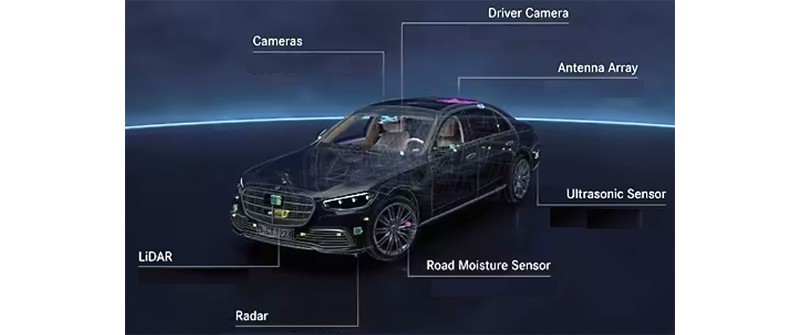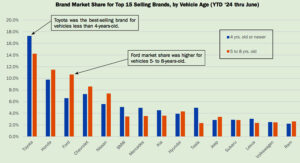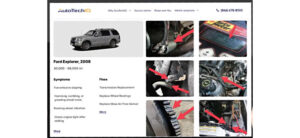DRIVE PILOT is the world’s first and only level 3 autonomous system in a standard-production vehicle authorized for use on U.S. public freeways
Carson City, Nev.—Mercedes-Benz is the world’s first automotive company to bring SAE Level 3 conditionally automated driving to the U.S., with Nevada being the first state to confirm the compliance of the system with state regulations.
The Mercedes-Benz DRIVE PILOT system is the first and only SAE Level 3 system in a standard-production vehicle authorized for use on U.S. public freeways. Complying with the requirements of Nevada Chapter 482A for Autonomous Vehicles, DRIVE PILOT will allow the driver to hand over the dynamic driving task to the vehicle under certain conditions.
Mercedes-Benz has the ambition to continue to expand to California later this year with the certification documents already filed with state authorities. DRIVE PILOT will be available in the U.S. market as an option for model year 2024 Mercedes-Benz S-Class and EQS Sedan models, with the first cars delivered to customers in the second half of 2023.
On suitable freeway sections and where there is high traffic density, DRIVE PILOT can offer to take over the dynamic driving task, up to the speed of 40 mph. The control buttons needed for this are located in the steering wheel rim, on the left and right above the thumb recesses. Once conditions are suitable, the system indicates availability on the control buttons. When the driver activates DRIVE PILOT, the system controls the speed and distance, and effortlessly guides the vehicle within its lane. The route profile, events occurring on the route and traffic signs are correspondingly taken into consideration. The system also reacts to unexpected traffic situations and handles them independently, e.g. by evasive maneuvers within the lane or by braking maneuvers.
LiDAR sensor and redundant systems
The top priority for Mercedes-Benz when introducing such a system is safety, which includes high demands on operational reliability, stated the OEM. DRIVE PILOT builds on the surround sensors of the Driving Assistance Package and comprises additional sensors that Mercedes-Benz considers indispensable for safe conditionally automated driving. These include LiDAR, as well as a camera in the rear window and microphones for detecting emergency vehicles, as well as a road wetness sensor in the wheel well. A vehicle equipped with the optional DRIVE PILOT system also has redundant steering and braking actuators and a redundant on-board electrical system, so that it remains maneuverable even if one of these systems fails and a safe handover to the driver can be ensured.
If the driver fails to take back control even after increasingly urgent prompting and expiration of the takeover time (e.g., due to a severe health problem), the system brakes the vehicle to a standstill in a controlled manner while engaging the hazard warning lights. Once the vehicle has come to a standstill, the Mercedes-Benz emergency call system is activated and the doors are unlocked to make the interior accessible for first responders.
High-precision positioning system
The exact location of a Mercedes-Benz equipped with DRIVE PILOT is determined using a high-precision positioning system that is much more powerful than conventional GPS systems. In addition to the anonymized data collected by LiDAR, camera, radar and ultrasound sensors, a digital HD map provides a three-dimensional image of the road and the surroundings with information on road geometry, route characteristics, traffic signs and special traffic events (e.g. accidents or road works). This is made available and updated via a backend connection.
This high-precision map differs from maps for navigation devices by, among other things, its higher accuracy in the centimeter rather than meter range and its detailed junction and route model. The map data is stored in backend data centers and updated constantly. Each vehicle also stores an image of this map information on board, constantly compares it with the backend data and updates the local dataset as required. All of this enables stable and accurate positioning through a representation of the surroundings that is independent of factors such as shadows or dirty sensors.
A powerful chipset inside the central control unit provides the necessary sophisticated software functions for conditionally automated driving while important algorithms are calculated redundantly within the framework of a modern security architecture.
Conditionally automated driving on suitable freeway sections
During the conditionally automated journey, DRIVE PILOT allows the driver to take their mind off the traffic and focus on certain secondary activities. When DRIVE PILOT is active, applications can be enabled on the vehicle’s integrated central display that are otherwise blocked while driving.
Initially introduced in Germany in May 2022, the Mercedes-Benz DRIVE PILOT system was the first SAE Level 3 system in the world to meet the demanding legal requirements of UN-R157. The German Federal Motor Transport Authority (KBA) first granted system approval based on the regulation UN-R157, paving the way for offering DRIVE PILOT internationally, where legislation allows.
















Comments are closed.